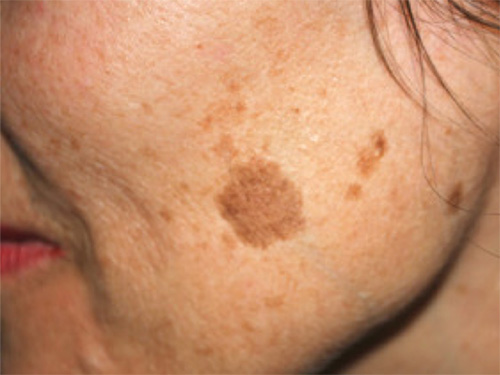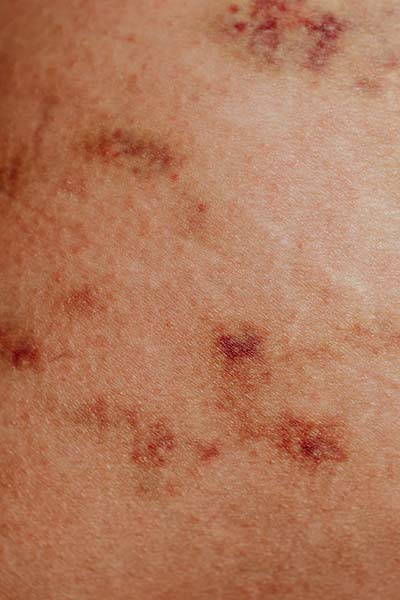Contents
Before discussing the top vitamins for age spots, let’s learn more about them. Age spots, also known as sun spots or liver spots, are flat, darkened areas of skin often caused by sun exposure. They are common in people over 40 and typically appear on the face, hands, and arms. While age spots are harmless, many people find them unsightly.
What Causes Age Spots?

Age spots are caused by an increase in melanin, the pigment that gives skin its color. This increase in melanin can be caused by sun exposure, aging, and hormonal changes.
How Can I Prevent Age Spots?
- Limit sun exposure. This is the most important thing you can do to prevent age spots. Avoid the sun in the middle of the day, when the sun’s rays are strongest. Wear sunscreen with an SPF of 30 or higher daily, even on cloudy days.
- Protect your skin from tanning beds. Tanning beds emit ultraviolet (UV) rays that can damage your skin and increase your risk of age spots.
- Eat a healthy diet. A diet rich in fruits, vegetables, and whole grains can help protect your skin from sun damage.
- Don’t smoke. Smoking damages your skin and can make age spots worse.
Top Vitamins For Age Spots
Specific vitamins can help reduce the appearance of age spots. These vitamins for age spots include:
- Vitamins for age spots: (Vitamin C) Vitamin C is an antioxidant that helps protect your skin from sun damage. It also helps to brighten your skin and reduce the appearance of dark spots.
- Vitamins for age sports: (Vitamin E) Vitamin E is another antioxidant that helps protect skin from sun damage. It also helps moisturize skin and keep it looking healthy.
- Vitamins for age spots: (Vitamin B3). Vitamin B3, also known as niacinamide, can help reduce the appearance of age spots by inhibiting melanin production.
- Vitamins for age spots: (Vitamin A). Vitamin A can help reduce age spots’ appearance by promoting cell turnover.
How Can I Get These Vitamins?
You can get vitamins for age spots from food, supplements, or skin care products.
Food sources of vitamin C include:

- Citrus fruits, such as oranges, grapefruits, and lemons
- Strawberries
- Bell peppers
- Broccoli
- Brussels sprouts
Food sources of vitamin E include:
Food sources of vitamin B3 include:
- Poultry
- Meat
- Fish
- Dairy products
- Legumes
Food sources of vitamin A include:
- Sweet potatoes
- Carrots
- Spinach
- Kale
- Liver

Talking to your doctor before taking any vitamins or supplements is essential. They can help you determine the correct dosage and ensure you are not taking too much of any one vitamin.
Skin care products that contain these vitamins can also help to reduce the appearance of age spots. Look for products that contain vitamin C, vitamin E, vitamin B3, or vitamin A.
In addition to taking vitamins and using skin care products, there are other things you can do to reduce the appearance of age spots:
Exfoliate your skin regularly. Exfoliating helps to remove dead skin cells and make your skin look brighter.
Use a moisturizer. Moisturizing helps to keep your skin hydrated and can help to reduce the appearance of age spots.
Consider professional treatments. Laser therapy and chemical peels, for example, can help reduce the appearance of age spots.
With proper treatment, you can reduce the appearance of age spots and improve the overall appearance of your skin.
Here are some additional tips for preventing and reducing age spots:
- Wear a wide-brimmed hat when you are outdoors.
- Avoid tanning beds.
- Don’t smoke.
- Eat a healthy diet.
- Exercise regularly.
- Manage stress.
DISCLAIMER: All content on this website is presented solely for educational and informational objectives. Do not rely on the information provided as a replacement for advice, diagnosis, or treatment from a qualified medical expert. If you are pregnant, nursing, or have any preexisting medical concerns, talk to your doctor before using any herbal or natural medicines.
References
- Journal of Clinical and Aesthetic Dermatology – Vitamin C in Dermatology: https://www.ncbi.nlm.nih.gov/pmc/articles/PMC5579659/
- Linus Pauling Institute – Vitamin C and Skin Health: https://lpi.oregonstate.edu/mic/health-disease/skin-health/vitamin-C
- British Journal of Dermatology – Niacinamide in dermatology: https://onlinelibrary.wiley.com/doi/abs/10.1046/j.1365-2133.2002.04834.x
- International Journal of Molecular Sciences – Vitamin E in dermatology: https://www.ncbi.nlm.nih.gov/pmc/articles/PMC7071258/
- Indian Dermatology Online Journal – Vitamin B12 deficiency: https://www.ncbi.nlm.nih.gov/pmc/articles/PMC4375356/
Last update on 2025-05-15 / Affiliate links / Images from Amazon Product Advertising API





